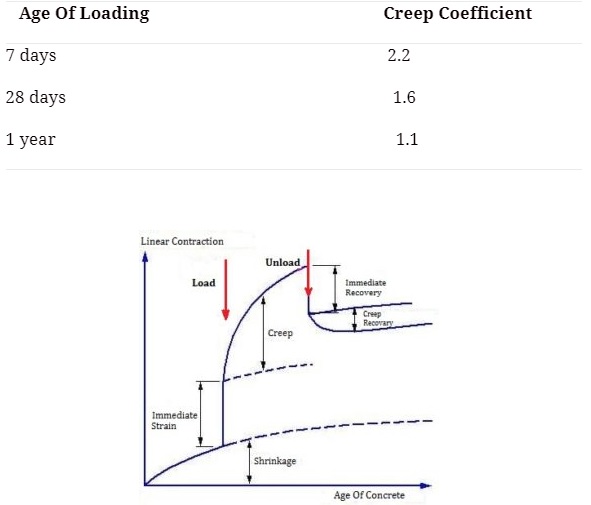Table of Contents
Creep in Concrete
Elastic and long-term deformation of Concrete under a continuous load is called Creep. Long-term stress alters the shape of the concrete structure and deformation occurs along the direction of applied stress.
After the removal of stress, the strain is reduced immediately. The amount of the reduced strain is equal to the elastic strain. This rapid recovery is then followed by a continuous decrease in strain, called creep recovery which is a part of the total creep strain suffered by the concrete.
Creep is time-dependent and follows hooks law.
When force is applied to the concrete, the structure undergoes elastic and inelastic deformations. Elastic deformations happen immediately after the concrete is subjected to a given load, as per Hooke’s Law.
Inelastic deformations enhance with time as the concrete experiences a sustained load. This inelastic distortion increases at a decreasing rate during the loading period.
In the first month of sustained loading, roughly one-fourth to one-third of the ultimate creep takes place. As time continues, typically one-half to three-fourths of the ultimate creep occurs during the first half-year.
Coefficient Of Creep
The ratio of the ultimate creep strain to the elastic strain at the age of loading is known as the creep coefficient. The assumed data of creep coefficient are as follows

Factors Affecting Creep Of Concrete:
- The water-cement ratio affects creep in concrete, creep increases with the increment of the water-cement ratio.
- Concrete Creep is affected by the humidity and the drying condition of the environment.
- It is time-dependent and follows hooks law.
- Moist aggregated concrete causes Creep.
- Some concrete accelerator cause concrete creeps.
